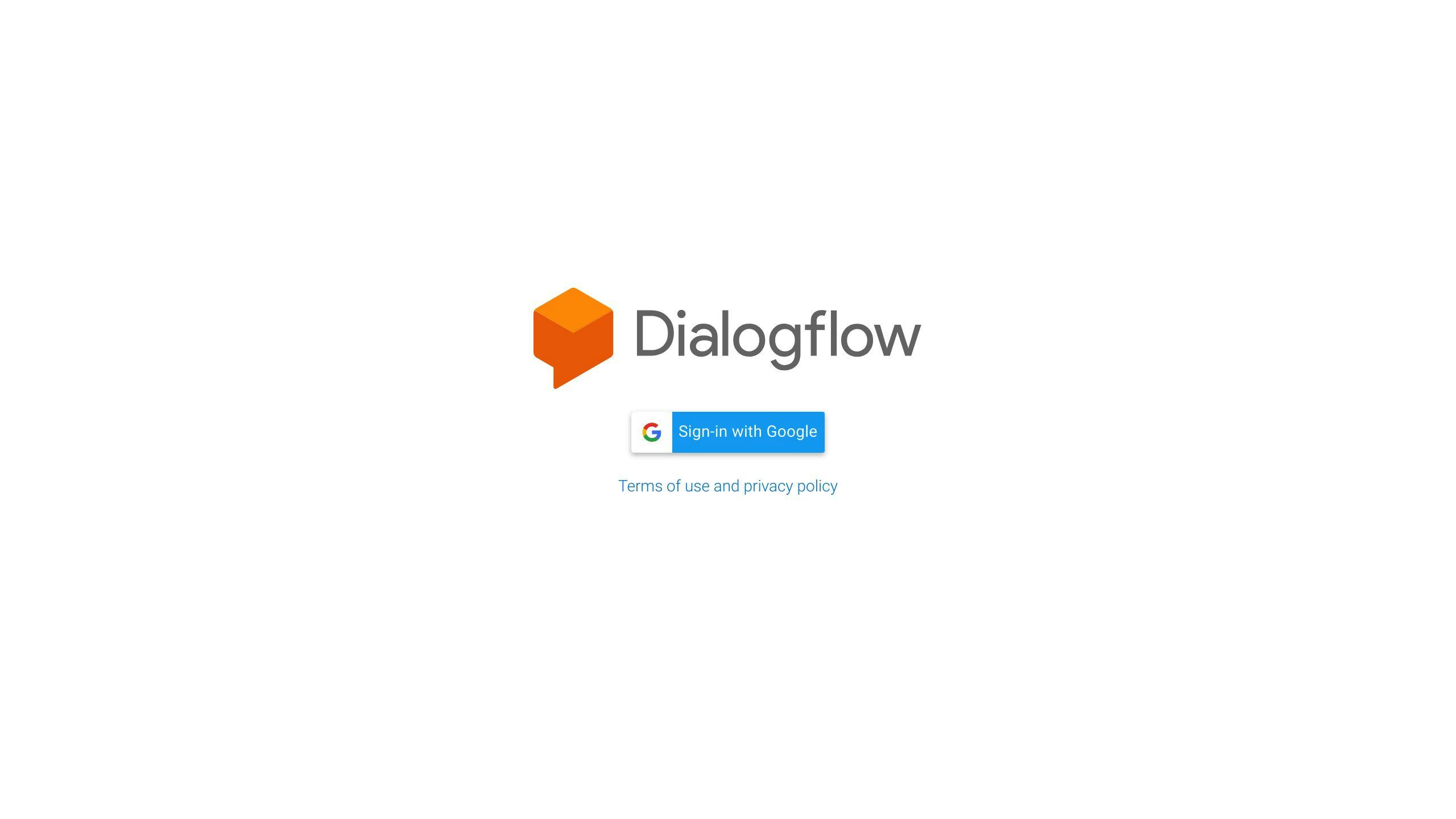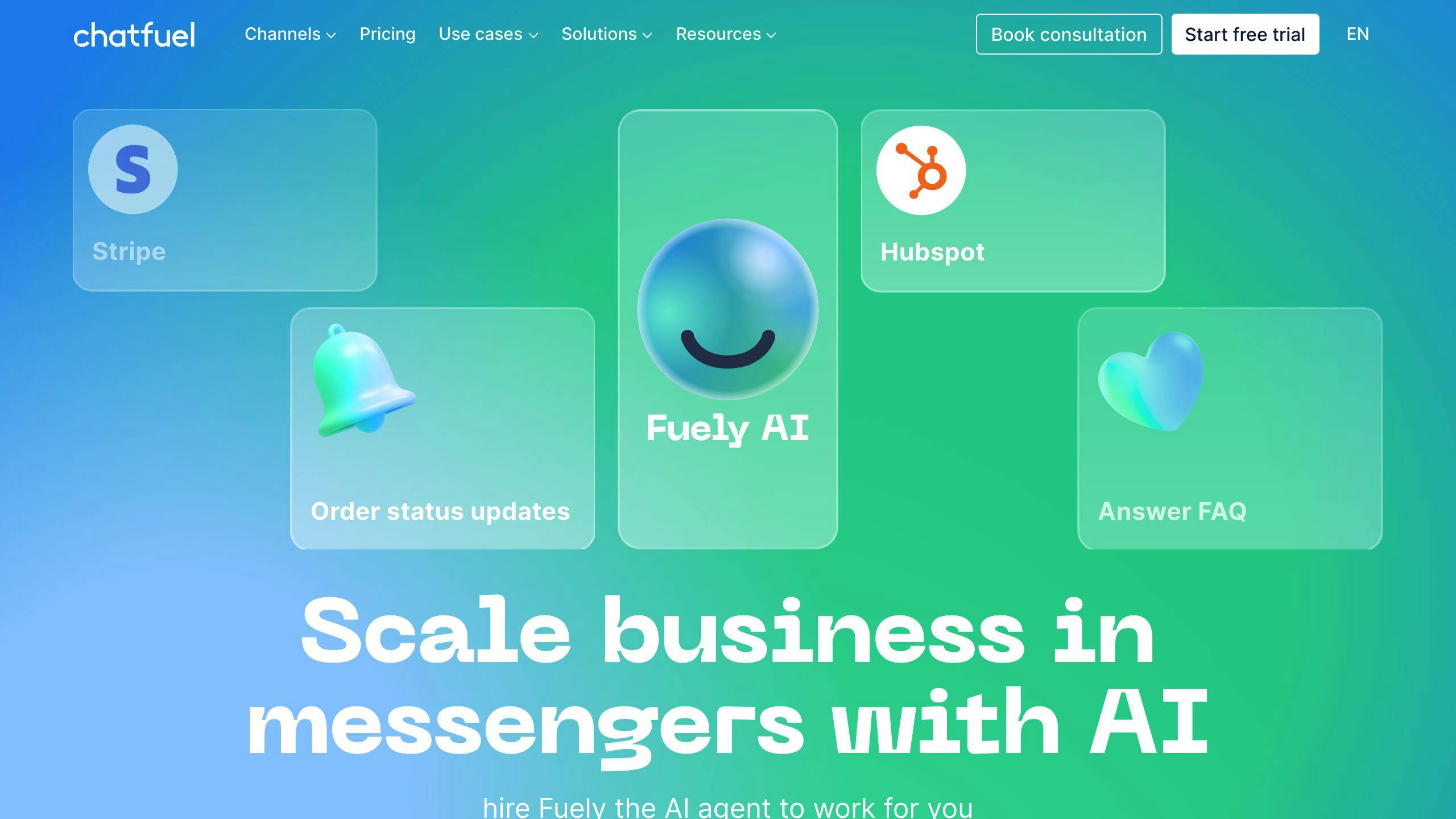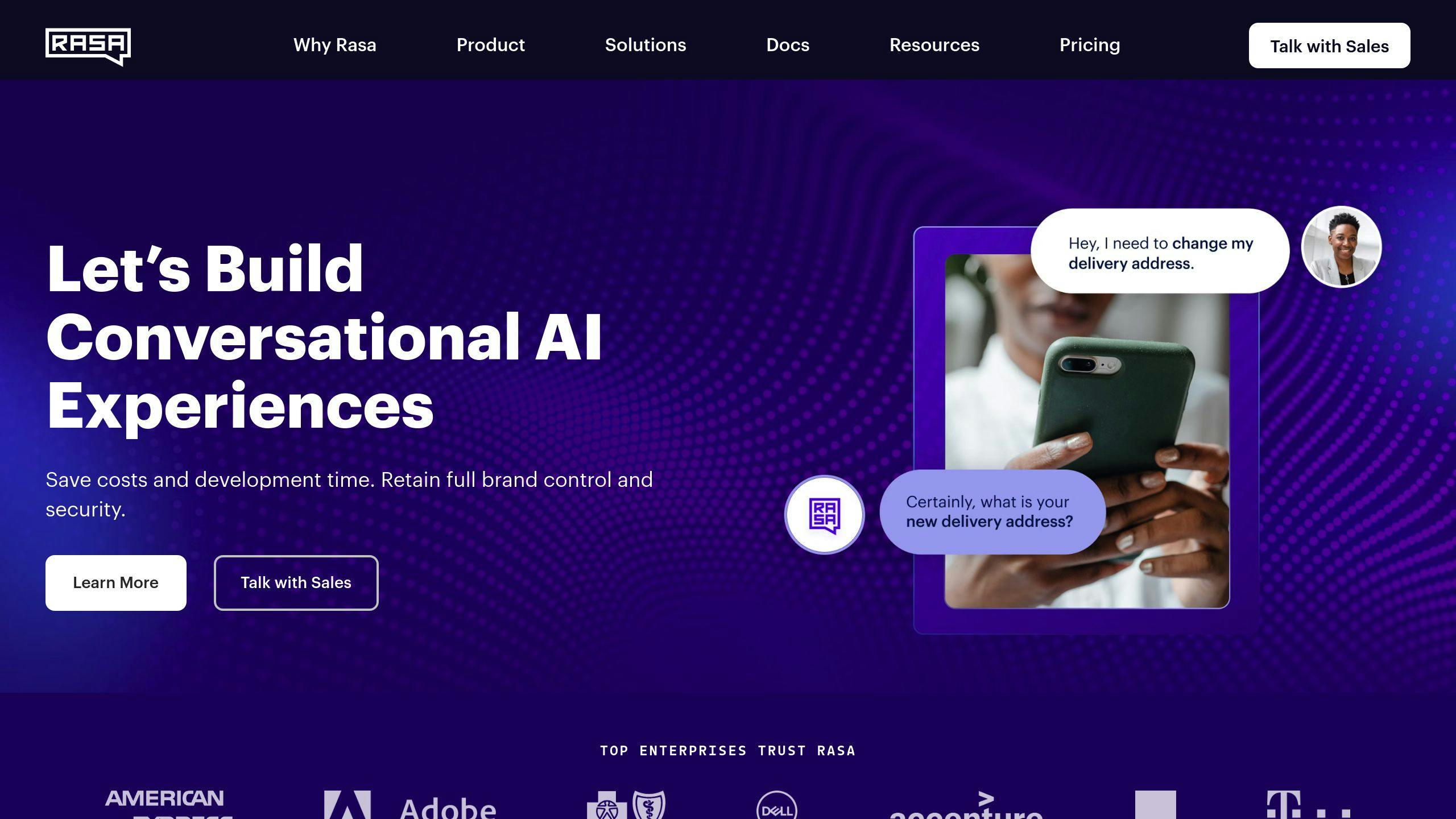Banking chatbots are AI-powered programs that provide financial services and customer support through chat interfaces. They offer 24/7 assistance, automate routine tasks, enhance security, and provide personalized experiences.
Key Benefits of Banking Chatbots
- Improved customer service with round-the-clock support
- Increased efficiency by automating routine tasks
- Enhanced security with fraud detection and authentication
- Personalized experiences through tailored recommendations
- Cost savings for banks by reducing operational expenses
10 Steps to Build a Banking Chatbot
-
Set Chatbot Goals: Define measurable objectives like reducing customer queries, increasing sales, or improving marketing strategies.
-
Choose a Platform: Select a chatbot platform like Dialogflow, Chatfuel, or RASA based on your requirements and technical expertise.
-
Design User Interaction: Understand customer needs, craft intuitive conversation flows, and leverage natural language processing (NLP).
-
Build Core Features: Develop conversational banking, transactional capabilities, personalized responses, and ensure regulatory compliance.
-
Add Media Content: Incorporate images, carousels, and videos for clarity and engagement.
-
Set Up Human Support: Identify scenarios for human handoffs and enable seamless transitions.
-
Test and Refine: Conduct rigorous testing, analyze user feedback, and continuously refine the chatbot.
-
Deploy and Integrate: Launch the chatbot across channels and integrate with existing banking systems.
-
Monitor Performance: Set up KPIs, use analytics tools, and identify areas for improvement.
-
Maintain and Update: Refine the knowledge base, adapt to new products and services, and stay updated with industry trends.
The Future of Banking
Chatbots will play a central role in shaping the future of banking, offering improved customer service, enhanced security, increased efficiency, and personalized experiences. The future lies in the synergy of people and technology, with chatbots augmenting human capabilities and driving business success.
Step 1: Set Chatbot Goals
Before building your banking chatbot, define its goals and objectives. What do you want your chatbot to achieve? What kind of interactions do you want it to have with your customers?
Defining Success Criteria
To set effective goals, you need to define measurable success criteria. Ask yourself:
- What are the key performance indicators (KPIs) for my chatbot?
- How will I measure the success of my chatbot?
- What are the metrics that will indicate whether my chatbot is achieving its goals?
Common Goals for Banking Chatbots
| Goal | Description |
|---|---|
| Customer Support | Provide 24/7 support to customers, answering frequently asked questions and resolving common issues. |
| Sales | Offer personalized financial products and services to customers, increasing sales and revenue. |
| Data Collection | Gather customer insights and data to improve marketing strategies and product development. |
Examples of Measurable Success Criteria
| Criteria | Description |
|---|---|
| Reduce customer support queries by 30% within the first six months. | Decrease the number of customer support queries by 30% within six months. |
| Increase sales of financial products by 25% within the first year. | Boost sales of financial products by 25% within a year. |
| Collect and analyze customer data to inform marketing strategies, resulting in a 20% increase in conversion rates. | Gather customer data to improve marketing strategies, leading to a 20% increase in conversion rates. |
By setting clear goals and measurable success criteria, you can ensure that your banking chatbot is effective in achieving its objectives and providing value to your customers.
Step 2: Choose a Platform
Selecting the right chatbot platform is crucial for building an effective banking chatbot. Different platforms offer varying features, capabilities, and levels of complexity. Here are some popular options to consider:
Dialogflow

Dialogflow is a conversational AI platform developed by Google. It provides natural language processing and machine learning capabilities to create intelligent chatbots. Key features include:
- Easy integration with Google services and third-party platforms
- Support for multiple languages
- Rich analytics and reporting tools
- Ability to handle complex conversations with context awareness
Chatfuel

Chatfuel is a no-code chatbot builder that allows you to create chatbots for various messaging platforms like Facebook Messenger, Telegram, and WhatsApp. It offers:
- User-friendly drag-and-drop interface
- Pre-built templates and plugins
- Ability to collect user data and integrate with external services
- Limited natural language processing capabilities
RASA

RASA is an open-source conversational AI platform that focuses on advanced natural language understanding and dialogue management. Its key strengths include:
- Highly customizable and scalable
- Support for complex dialogue flows and context handling
- Integration with various messaging channels and voice assistants
- Robust machine learning capabilities for intent recognition and entity extraction
Platform Comparison
| Platform | Features | Pros | Cons |
|---|---|---|---|
| Dialogflow | NLP, ML, Integration | Easy integration, Rich analytics | Steep learning curve, Limited customization |
| Chatfuel | No-code, Templates, Plugins | Easy to use, Quick deployment | Limited NLP, Lack of advanced features |
| RASA | Customizable, Scalable, ML | Highly customizable, Advanced NLU | Requires coding expertise, Steeper learning curve |
When choosing a platform, consider factors such as your team's technical expertise, the complexity of your chatbot requirements, integration needs, and budget constraints. Evaluate each platform's strengths and limitations to ensure it aligns with your banking chatbot's goals and objectives.
Step 3: Design User Interaction
Designing user interaction is a crucial step in building a banking chatbot. The goal is to create a conversation flow that is intuitive, user-friendly, and engaging.
Understanding Customer Needs
To design an effective user interaction, you need to understand what your customers want to achieve through the chatbot. This involves identifying their pain points, goals, and motivations. You can do this by:
- Conducting customer surveys
- Gathering feedback
- Analyzing their behavior on your website or mobile app
Crafting a Conversation Flow
Once you have a deep understanding of your customers' needs, you can start crafting a conversation flow that meets their expectations. Here are some best practices to keep in mind:
- Keep it simple: Avoid using complex language or jargon that may confuse your customers.
- Be concise: Keep your responses brief and to the point to avoid overwhelming your customers.
- Use natural language: Use everyday language that feels natural and conversational.
- Use visual aids: Incorporate images, videos, or charts to help illustrate complex concepts or provide additional information.
Leveraging NLP for Natural Dialogues
Natural Language Processing (NLP) is a key technology that enables chatbots to understand and respond to customer queries in a natural and human-like way. By leveraging NLP, you can create a chatbot that can:
| Capability | Description |
|---|---|
| Understand intent | Identify the customer's intent behind their query, such as booking a loan or checking account balance. |
| Recognize entities | Extract specific information from the customer's query, such as dates, times, or amounts. |
| Generate responses | Create responses that are relevant, accurate, and personalized to the customer's query. |
By following these best practices and leveraging NLP, you can design a user interaction that is intuitive, engaging, and effective in helping your customers achieve their goals.
Step 4: Build Core Features
Building core features is a crucial step in creating a banking chatbot that provides a seamless and personalized experience for customers. In this section, we'll explore the essential capabilities your chatbot should possess to meet customer expectations and comply with banking regulations.
Conversational Banking
Your chatbot should be able to understand natural language and respond accordingly. This involves developing a conversational flow that is intuitive, user-friendly, and engaging.
Transactional Capabilities
A banking chatbot should be able to perform various transactions, such as:
| Transaction | Description |
|---|---|
| Account balance inquiries | Check account balances |
| Fund transfers | Transfer funds between accounts |
| Bill payments | Pay bills online |
| Loan applications | Apply for loans online |
| Credit card transactions | Manage credit card transactions |
Personalized Responses
Your chatbot should be able to provide personalized responses based on customer preferences, behavior, and transaction history.
| Personalized Response | Description |
|---|---|
| Tailored financial products | Offer personalized financial products and services |
| Customized investment advice | Provide customized investment advice |
| Personalized notifications | Send personalized notifications and alerts |
| Loyalty rewards | Offer loyalty rewards and benefits |
Compliance with Banking Regulations
It's essential to ensure that your chatbot complies with banking regulations, such as:
| Regulation | Description |
|---|---|
| Data privacy and security | Protect customer data and ensure secure transactions |
| Anti-money laundering (AML) and know-your-customer (KYC) regulations | Comply with AML and KYC regulations |
| Financial reporting and auditing | Ensure accurate financial reporting and auditing |
| Customer authentication and verification | Authenticate and verify customer identities |
In the next section, we'll explore how to add media content to your chatbot to enhance the user experience.
sbb-itb-b2c5cf4
Step 5: Add Media Content
Incorporating media elements like images, carousels, and videos can greatly enhance the user experience and engagement with your banking chatbot. These visual aids help deliver information more clearly and interactively, improving comprehension and retention.
Use Images for Clarity
Images can illustrate complex financial concepts, products, or processes in a simple and intuitive manner. For example, you could include an image to visually explain the steps involved in applying for a loan or setting up automatic bill payments.
| Image Type | Description |
|---|---|
| Product details | Showcase credit card designs or investment portfolio performance charts |
| Process explanations | Illustrate steps involved in applying for a loan or setting up automatic bill payments |
Implement Interactive Carousels
Carousels are an effective way to present multiple options or choices to customers in a visually appealing and organized manner. For instance, when a customer inquires about opening a new account, a carousel could display different account types with their respective features and benefits.
| Carousel Type | Description |
|---|---|
| Account types | Display different account types with their features and benefits |
| Financial products | Showcase various financial products, such as loans, credit cards, or investment plans |
Incorporate Explainer Videos
Short, informative videos can explain complex financial concepts or processes in a simple and engaging way. These explainer videos can cover topics like budgeting, credit management, or investment strategies.
| Video Type | Description |
|---|---|
| Product demonstrations | Showcase the features and benefits of your banking services |
| Financial education | Explain complex financial concepts or processes in a simple and engaging way |
Ensure Accessibility and Compliance
When incorporating media content into your chatbot, it's crucial to ensure accessibility for users with disabilities. This includes providing alternative text descriptions for images and closed captions or transcripts for videos.
Additionally, you must comply with relevant banking regulations and guidelines regarding the use of media content, such as ensuring the accuracy of information presented and obtaining necessary permissions or licenses for copyrighted material.
By thoughtfully integrating media elements like images, carousels, and videos, you can create a more engaging and informative chatbot experience for your customers, ultimately enhancing their overall satisfaction and trust in your banking services.
Step 6: Set Up Human Support
Setting up human support is crucial to ensure a seamless customer experience when the chatbot cannot resolve an issue. This step helps to identify when to hand off the conversation to a human agent.
When to Hand Off
Identify scenarios where the chatbot should transfer the conversation to a human agent. These scenarios may include:
- Complex customer inquiries
- Technical issues that require human intervention
- Customer requests for human assistance
- Situations where the chatbot is unable to provide a clear answer or solution
Implementing Handoffs
Configure your chatbot to analyze customer requests and identify when a handoff to a human agent is necessary. This can be achieved through natural language processing (NLP) and machine learning algorithms.
Seamless Transitions
Design a seamless transition process to ensure that customers are not aware of the handoff from the chatbot to a human agent. This can be achieved by:
| Transition Step | Description |
|---|---|
| Notification | Provide a clear notification to the customer that they will be transferred to a human agent. |
| Conversation History | Ensure that the human agent has access to the entire conversation history. |
| Contextual Pick-up | Enable the human agent to pick up the conversation where the chatbot left off. |
By setting up a well-designed human support system, you can ensure that your banking chatbot provides a comprehensive and effective customer experience, even in complex or emotionally charged situations.
Step 7: Test and Refine Chatbot
Testing and refining your banking chatbot is crucial to ensure it provides an optimal customer experience. This phase involves rigorous testing, leveraging analytics and user feedback to refine its performance over time.
Rigorous Testing
Conduct thorough testing of your chatbot to identify any flaws, inconsistencies, or areas for improvement. This includes:
- Scenario-based testing: Test the chatbot in different scenarios, such as handling complex customer inquiries or processing transactions.
- Edge case testing: Test the chatbot's ability to handle unusual or unexpected inputs.
- User testing: Conduct user testing with a diverse group of customers to gather feedback on the chatbot's performance and usability.
Analytics and Feedback
Analyze user interactions and feedback to identify areas for improvement and optimize the chatbot's performance. This includes:
| Analytics | Description |
|---|---|
| Conversation metrics | Analyze response time, completion rate, and user satisfaction. |
| User feedback | Collect and analyze user feedback through surveys, ratings, or other feedback mechanisms. |
| A/B testing | Compare the performance of different chatbot versions, features, or interfaces. |
Continuous Refining
Refine the chatbot's performance based on the insights gathered from testing and analytics. This includes:
- Iterative development: Continuously update and refine the chatbot's features, interface, and algorithms.
- Knowledge base updates: Update the chatbot's knowledge base with new information, FAQs, and common customer queries.
- Training and tuning: Continuously train and tune the chatbot's machine learning models to improve its ability to understand natural language and respond accurately to customer queries.
By rigorously testing and refining your banking chatbot, you can ensure it provides an exceptional customer experience, builds trust, and drives business growth.
Step 8: Deploy and Integrate
Now that your banking chatbot is tested and refined, it's time to deploy it across multiple channels and integrate it with existing banking systems and data sources. This step is crucial to ensure a seamless customer experience and maximize the chatbot's potential.
Choosing Deployment Channels
Select the most relevant channels to deploy your chatbot, such as:
| Channel | Description |
|---|---|
| Messaging platforms | Facebook Messenger, WhatsApp, WeChat, or SMS |
| Banking websites and mobile apps | Integrate the chatbot into your online banking platform or mobile app |
| Voice assistants | Amazon Alexa, Google Assistant, or Apple Siri |
| Customer service platforms | Integrate the chatbot with your customer service software or CRM |
Integration with Existing Systems
Integrate your chatbot with existing banking systems and data sources, such as:
| System | Description |
|---|---|
| Core banking systems | Integrate with your core banking system to access customer data and perform transactions |
| Customer relationship management (CRM) systems | Integrate with your CRM to access customer information and history |
| Data analytics platforms | Integrate with your data analytics platform to gather insights and improve the chatbot's performance |
| Security and authentication systems | Integrate with your security and authentication systems to ensure secure transactions and customer data protection |
Ensuring Seamless Integration
To ensure seamless integration, consider the following:
- APIs and SDKs: Use APIs and SDKs provided by your chatbot platform or third-party vendors to facilitate integration
- Data mapping: Map your chatbot's data structures to your existing systems' data structures
- Testing and quality assurance: Thoroughly test the integration to ensure data consistency and accuracy
- Monitoring and maintenance: Continuously monitor the integration and perform maintenance to ensure smooth operation
By deploying your banking chatbot across multiple channels and integrating it with existing systems, you can provide a unified customer experience, increase efficiency, and drive business growth.
Step 9: Monitor Performance
To ensure your banking chatbot is meeting its goals and providing a seamless customer experience, it's essential to monitor its performance regularly. This step involves setting up key performance indicators (KPIs), using analytics tools, and identifying areas for continuous improvement.
Setting Up KPIs
Define relevant KPIs to measure the chatbot's performance, such as:
| KPI | Description |
|---|---|
| Resolution Rate | The percentage of customer inquiries resolved by the chatbot |
| First Response Time | The average time taken by the chatbot to respond to customer inquiries |
| Customer Satisfaction | The percentage of customers satisfied with the chatbot's responses |
| Abandonment Rate | The percentage of customers who abandon their conversations with the chatbot |
| Conversion Rate | The percentage of customers who complete a desired action (e.g., applying for a loan) |
Using Analytics Tools
Utilize analytics tools to track the chatbot's performance and gather insights on customer behavior. These tools can help you:
- Identify areas where the chatbot is struggling to provide accurate responses
- Analyze customer sentiment and feedback
- Optimize the chatbot's conversation flow and user interface
- Identify opportunities to improve the chatbot's integration with existing systems
Identifying Areas for Improvement
Regularly review the chatbot's performance data to identify areas for improvement, such as:
- Common pain points: Identify recurring issues or pain points that customers are experiencing with the chatbot
- Knowledge gaps: Identify areas where the chatbot lacks knowledge or provides inaccurate responses
- User experience: Identify opportunities to improve the chatbot's user interface and conversation flow
- Integration issues: Identify issues with the chatbot's integration with existing systems and data sources
By monitoring the chatbot's performance and identifying areas for improvement, you can refine its capabilities, enhance the customer experience, and drive business growth.
Step 10: Maintain and Update
To keep your banking chatbot effective and efficient, regular maintenance and updates are crucial. This involves refining its knowledge base, adapting to new banking products and services, and staying up-to-date with industry trends.
Refine the Knowledge Base
Regularly review and update the chatbot's knowledge base to ensure it remains accurate and relevant. This includes:
| Update Type | Description |
|---|---|
| Product information | Ensure the chatbot has the latest information on banking products and services. |
| Intents and entities | Expand the chatbot's understanding of customer queries by adding new intents and entities. |
| Conversation flows | Analyze customer interactions and refine the chatbot's conversation flows to improve the overall user experience. |
Adapt to New Banking Products and Services
The banking industry is constantly evolving, with new products and services emerging regularly. To stay ahead, your chatbot should be able to adapt to these changes, including:
| Adaptation Type | Description |
|---|---|
| API integration | Ensure the chatbot can integrate with new APIs and systems, enabling it to access the latest information and functionality. |
| Workflow updates | Refine the chatbot's workflows and processes to accommodate new products and services, ensuring a seamless customer experience. |
Stay Up-to-Date with Industry Trends
The banking industry is subject to changing regulations, technologies, and customer expectations. To remain effective, your chatbot should stay up-to-date with the latest industry trends, including:
| Trend Type | Description |
|---|---|
| Industry news | Stay informed about the latest industry news and developments, and update the chatbot accordingly. |
| Industry events | Engage with industry experts and thought leaders to stay informed about best practices and emerging trends. |
By maintaining and updating your banking chatbot regularly, you can ensure it remains a valuable tool for customers, providing a seamless and efficient experience that drives business growth.
Conclusion: The Future of Banking
The banking industry is undergoing a significant transformation, driven by the increasing adoption of AI chatbots. As we've seen throughout this guide, building a banking chatbot in 10 steps is a feasible and necessary step towards future-proofing banking operations. By integrating chatbots into their services, banks can provide customers with efficient, personalized, and seamless experiences that drive business growth.
The Role of Chatbots in Banking
Chatbots will play a central role in shaping the future of banking, offering:
| Benefits | Description |
|---|---|
| Improved customer service | 24/7 support, answering customer queries, and guiding them through complex financial tasks. |
| Enhanced security | Advanced chatbots will utilize encryption, authentication protocols, and fraud detection to protect customer data and transactions. |
| Increased efficiency | Chatbots will automate routine tasks, freeing up human agents to focus on complex, high-value tasks that require empathy and problem-solving skills. |
| Personalized experiences | Chatbots will leverage customer data and behavioral insights to offer tailored financial advice, product recommendations, and services. |
The Future of Banking
The future of banking lies in the synergy of people and technology, with chatbots augmenting human agents' capabilities and providing innovative services, seamless experiences, and enhanced value to both customers and financial institutions.
In conclusion, the future of banking is promising, and chatbots are poised to play a pivotal role in shaping its trajectory. By following the 10 steps outlined in this guide, banks can build effective, efficient, and customer-centric chatbots that drive business success and customer satisfaction.
FAQs
What is a banking chatbot?
A banking chatbot is a computer program that uses artificial intelligence to provide customer support and answer questions about banking services.
What do chatbots do in banking?
Chatbots in banking help customers with tasks such as:
- Answering frequent questions
- Guiding customers through complex financial tasks
- Providing personalized financial advice and product recommendations
They also help banks by:
- Automating routine tasks
- Enhancing security
- Increasing operational efficiency
What are the benefits of chatbots in banking?
The benefits of chatbots in banking include:
| Benefits | Description |
|---|---|
| 24/7 customer support | Customers can get help anytime |
| Increased efficiency | Chatbots automate routine tasks, freeing up human agents |
| Improved customer experience | Chatbots provide personalized support and guidance |
| Enhanced security | Chatbots help detect and prevent fraud |
| Cost savings | Chatbots reduce operational costs for banks |


